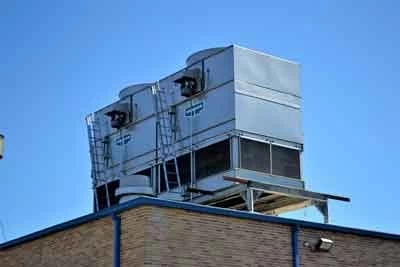BAS and the Internet of Things: An Era of Intelligent Buildings

The Internet of Things (IoT) has revolutionized various aspects of our lives, and building management is no exception. Building Automation Systems (BAS) are increasingly integrating with IoT devices, creating a network of interconnected devices that collect, analyze, and communicate data to optimize building operations. This article explores the convergence of BAS and IoT, examining the benefits, challenges, system configurations, and considerations for creating an intelligent building environment.
Benefits of Integrating BAS with IoT
Enhanced Building Intelligence: IoT devices act as data points within a building, providing valuable insights into environmental conditions, equipment performance, and occupant behavior. BAS integration allows for the aggregation and analysis of this data, enabling a more comprehensive understanding of building operations. This intelligence empowers facility managers to make data-driven decisions for optimizing energy consumption, improving occupant comfort, and streamlining maintenance practices.
Granular Control and Automation: IoT devices often offer granular control functionalities. For example, smart thermostats with built-in occupancy sensors can be integrated with BAS to adjust room temperature based on real-time occupancy data. This level of granularity allows for more precise control over building systems, leading to increased efficiency and occupant comfort.
Predictive Maintenance: IoT sensors can monitor equipment health and performance metrics. BAS integration allows for data analysis that can predict potential equipment failures before they occur. This proactive approach to maintenance minimizes downtime, extends equipment life, and reduces associated repair costs.
Improved Occupant Experience: Building occupants can interact with BAS through IoT devices like smartphones or smart speakers. This allows for personalized control over temperature, lighting, and other aspects of their environment, enhancing comfort and satisfaction. Additionally, BAS integrated with IoT sensors can optimize air quality and ensure a healthy indoor environment.
Building Sustainability: By optimizing energy consumption and equipment operation, BAS with IoT can contribute to a more sustainable building environment. Real-time data analysis allows for identifying and addressing energy inefficiencies, leading to reduced energy consumption and a smaller carbon footprint.
Types of IoT Devices Integrated with BAS
The types of IoT devices integrated with BAS vary depending on the specific needs of the building. Here are some common examples:
- Smart thermostats: These devices learn occupant preferences and adjust room temperature based on occupancy and real-time conditions.
- Smart lighting systems: These systems use occupancy sensors to automatically turn lights on and off, reducing energy consumption.
- Smart plugs: These devices can be used to monitor and control the energy consumption of individual appliances.
- Air quality sensors: These sensors monitor factors like carbon dioxide levels and particulate matter, allowing for adjustments to ventilation systems for a healthier environment.
- Water leak detectors: These devices can detect leaks early on, preventing potential water damage and minimizing repair costs.
- Access control systems: Smart locks and keyless entry systems can be integrated with BAS for secure and convenient access control.
Performance Considerations and Limitations
While BAS integration with IoT offers significant benefits, there are challenges to consider:
System Complexity: Integrating a multitude of IoT devices with BAS can introduce complexity. Careful planning and system design are crucial to ensure seamless communication and data exchange between different devices and platforms.
Data Security and Privacy: The increasing number of data points collected by IoT devices raises concerns about data security and privacy. Robust cybersecurity measures are essential to protect sensitive building data and prevent unauthorized access.
Standardization Issues: There is a lack of universal standards for communication protocols within the IoT landscape. This can lead to compatibility issues between different devices and BAS platforms.
Interoperability: Ensuring seamless interoperability between various IoT devices and BAS is crucial for optimal performance. Open communication protocols and standardized data formats can help overcome these challenges.
Technical Considerations for Integration
Needs Assessment: A thorough needs assessment is critical to identify the specific functionalities and data points most beneficial for the building. This assessment guides the selection of appropriate IoT devices and ensures their compatibility with the existing BAS infrastructure.
System Design and Integration: The BAS and IoT integration strategy should consider scalability and future expansion. Open communication protocols and interoperable devices are essential for future-proofing the system.
Data Security Measures: Implementing robust cybersecurity measures is crucial to protect sensitive building data and control systems. This includes user authentication, secure communication protocols, and data encryption.
Data Management and Analytics: A robust data management strategy is essential to handle the large volume of data generated by IoT devices. Data visualization tools and analytics platforms can help facility managers glean valuable insights from the collected data.
The integration of BAS with IoT devices represents a significant leap forward in building management. This convergence enables the creation of intelligent buildings that are more efficient, sustainable, and responsive to occupant needs.









